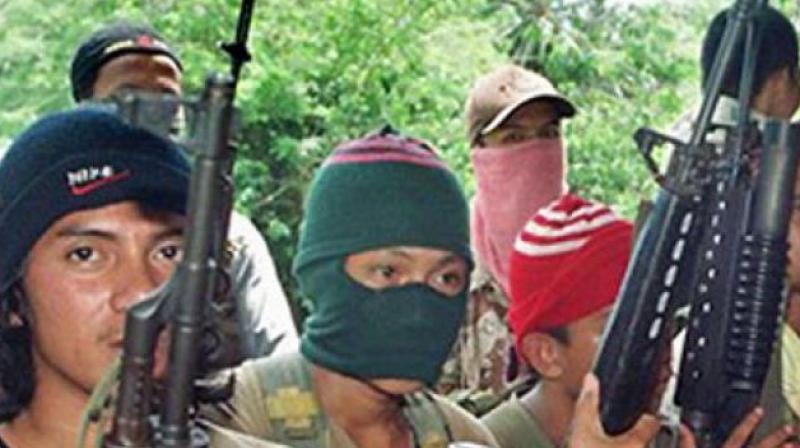Recent arrests prevented terror attacks last month and have exposed an Abu Sayyaf presence within Peninsular Malaysia.
HOW did an Abu Sayyaf gunman from Basilan island in southern Philippines end up in the heart of Kuala Lumpur?
Before we go to the how, let’s talk about the who.
The gunman is Abu Asrie.
In my 17 years covering the Abu Sayyaf, I’ve never heard of the name. His name suddenly popped up on my Facebook messaging app on the night of Sept 1.
“How are you? One ASG (Abu Sayyaf Group) member apprehended in KL,” said a contact from Jolo island in southern Philippines.
“In KL? When did this happen?” I said.
“Yesterday we received a report on a certain Abu Asrie. He is working as construction worker. He belongs to Harakatul al Islamiyah,” said the contact, referring to the name some Abu Sayyaf gunmen like to call themselves.
On Sunday, after checks with several sources in the Philippines and Malaysia to confirm the arrest, The Star broke the story that eight Abu Sayyaf militants – two Filipinos and six Malaysians – were caught in Cheras on the eve of National Day.
After the report was published, the Armed Forces of the Philippines confirmed that Hajar Abdul Mubin @ Abu Asrie and one other Filipino were arrested in the city.
The Philippine military told the media that Abu Asrie is the chief lieutenant of Furuji Indama, the leader of the Abu Sayyaf faction in Basilan. Sounds like the 25-year-old militant is a big name in the Abu Sayyaf hierarchy.
Two days later, newly appointed Inspector-General of Police Datuk Seri Mohamad Fuzi Harun said in a statement that the police received intelligence that the suspect – whom he did not name but is believed to be Abu Asrie – planned to launch attacks during the closing of the SEA Games in Bukit Jalil and during the National Day celebration in Dataran Merdeka.
“He was involved in six kidnappings of Philippine nationals as well as clashes with the Philippine military,” Mohamad Fuzi said, adding that the suspect was also responsible for murdering a Christian hostage in southern Philippines in 2010.
Abu Asrie is also believed to have held meetings with Malaysian militants Dr Mahmud Ahmad, Mohd Najib Hussein (a shopkeeper-turned-bombmaker killed in a clash with the Philippine military on Basilan island in December 2015) and Muhammad Juraimee Awang Ramlee at Kampung Tipo-Tipo in Basilan island in December 2015.
The suspect, according to the IGP, sneaked into Sandakan, Sabah, and headed to Kuala Lumpur in December 2015.
How was it possible for an Abu Sayyaf gunman to sneak into Cheras from Basilan island?
According to intel sources, there are at least three ways Abu Asrie could have travelled illegally for 433km by boat from Basilan to the east coast of Sabah.
1) Follow a tekong laut (boat skipper involved in human smuggling) in southern Philippines and land at one of the usual landing points in Sandakan or Semporna.
2) Follow the barter trade route from southern Philippines to the east coast of Sabah.
3) Stay several days in Bakungan Besar in the Philippines and travel to Sandakan via the daily boat ride which is checked less by security forces.
Then at Sandakan airport (or any airport in Sabah), Abu Asrie would need to show that he has proper documents to pass through immigration for his two-hour, 40-minute flight to KLIA.
“He probably bought the documents or he paid a syndicate to allow him to pass the immigration counter without proper documents,” said the intel source.
What was Abu Asrie doing in Kuala Lumpur for the last two years?
There are two theories.
According to Mohamad Fuzi, he had deadly intentions – launch attacks during the closing of the SEA Games in Bukit Jalil, and during the National Day celebration in Dataran Merdeka.
Intel that I got from the Philippines also confirmed that Abu Asrie was a dangerous man.
“He is a bomb expert/IED (improvised explosive device) maker. He is also foreign trained,” said an intel source.
However, there are other intel sources in the Philippines and Malaysia who believe that Abu Asrie was in Kuala Lumpur, to seek sanctuary from Philippine security forces.
“He is hiding here while waiting for the security situation in the Philippines to get more peaceful,” said an intel source, who has been monitoring Abu Asrie’s Facebook accounts. “From his Facebook postings, it seems he is more of a foot soldier.”
Interestingly, the intel source said Abu Asrie was in constant contact via video call with Abu Rami, the “media-savvy” Abu Sayyaf leader who appeared in several videos of hostage executions (whom Philippine security forces killed in Bohol, central Philippines in April).
In the last few years, the Abu Sayyaf presence, according to several intel sources in the Philippines and Malaysia, which was confined mostly in Sabah and southern Philippines, has spread across the South China Sea.
They are in areas in Peninsular Malaysia where there are a large number of “ori” or “photocopy” Sabahans (meaning original Malaysians or with fake documents) with family ties to southern Philippines.
The eight Abu Sayyaf militants who were arrested in Cheras are construction workers, security guards and Rela (Civil Defence Corp) members.
If you thought the Abu Sayyaf menace was a Sabah problem, think again. They are now the enemy within.
By Philip Golingai


No comments:
Post a Comment